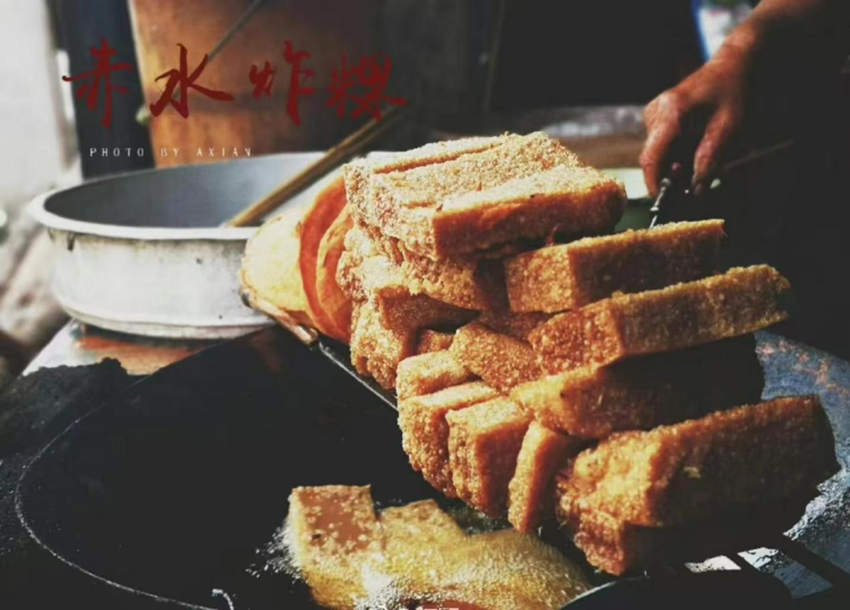- Culinary
- Ingredients
Since the Qing Dynasty (1644–1912), Chishui rice cakes (米粿) from Dehua have been celebrated for their unique and distinct flavours. These rice cakes can be steamed, stir-fried, or pan-fried, but the most popular preparation is frying. A well-known Minnan saying, "Quanzhou meat dumplings, Chishui fried cakes," underscores their cultural significance. Local legends from Chishui Old Street trace the origins of the fried rice cakes to a wandering palace pastry chef. It is said that this chef, by chance, brought royal pastry-making techniques to Chishui, combining them with local ingredients to create a dish that is crispy on the outside and soft on the inside.


Historically, Chishui Old Street was a vital trade route linking Dehua to the western and central parts of Fujian, including Datian, Yong'an, and Youxi. The street was filled with inns, bustling trading hubs, and a dedicated postal station. As a local delicacy, fried rice cakes quickly became a favourite among travellers and locals seeking a quick and satisfying meal.

The key ingredient in Chishui's fried rice cakes is "Nan Geng Cake." The preparation process is intricate, with each step reflecting the craftsmanship and skill of the artisans.
The process begins with a precise blend of high-quality rice and glutinous rice, which is soaked, ground, and fermented to create a smooth rice slurry. Salt, alkaline ingredients, and other seasonings are then carefully added to the slurry, which is poured into a bamboo steamer lined with fine mesh. A long stick is used to stir the mixture continuously, ensuring an even consistency while removing excess moisture. The rice slurry is then steamed in a sealed container for up to 10 hours, ensuring the rice cakes are fully cooked and achieve a smooth texture.
The crucial step in the process is frying. Once the rice cakes are cut into pieces, they are fried in hot oil over low heat until the outer layer becomes golden and crispy, while the inside remains soft and delicate. Achieving the right frying temperature is critical—too high or too low, and the texture will be compromised. Once fried, the cakes are served with a local spicy mountain pepper dipping sauce, adding a distinctive flavour. For variety, steamed rice cakes can also be pan-fried with soy sauce, vinegar, and chilli paste, or sliced and stir-fried with vegetables and meats.

For those preferring a milder flavour, the steamed rice cakes can be simply enjoyed with a splash of soy sauce.
This craft has been passed down through generations, and one of the most skilled practitioners today is Wu Xiuhua, a master of fried rice cakes from Chishui Street. Her small shop, a beloved local institution, has been operating for decades. It consists of two rooms: the inner room serves as a workshop, while the outer room, facing the street, is where the rice cakes are fried. A few simple tables and chairs allow guests to sit and enjoy the dish. The shop's rustic atmosphere, steeped in the scents of smoke and fire, adds to its charm. The most iconic feature is the traditional earthen stove, over 60 years old, located at the front of the shop. With years of experience, Wu has perfected the art of heat control, ensuring that each batch of rice cakes is perfectly golden and crispy.
Fried rice cakes are an essential dish during festivals and celebrations in Chishui, where their distinctive flavour and cultural significance bring a touch of warmth and joy to every occasion.
